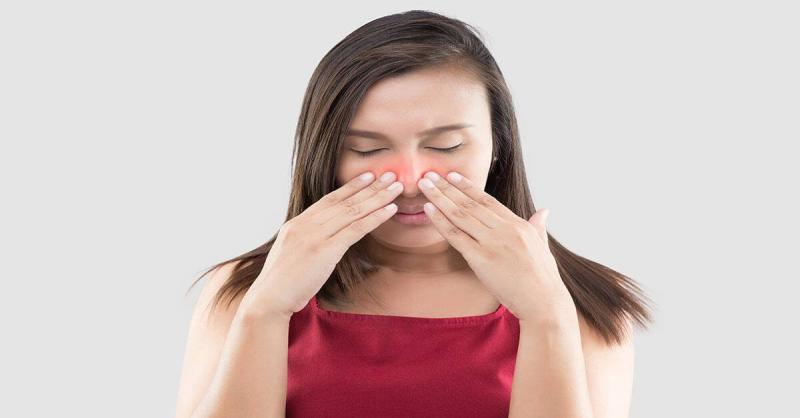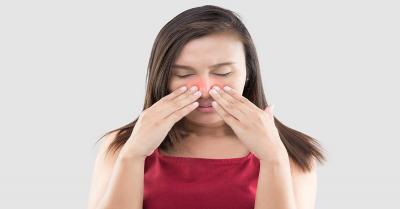Some individuals suffer from annoying sneezing, nasal inflammation, and sinus congestion; however, for those tired of frequently using tissues to clear their noses, there are some "tricks" that can eliminate nasal congestion "instantly," as reported by the British Daily Mail. James Moore, a massage therapist in the United States, shared a video on Instagram and TikTok with tips for people experiencing nasal congestion, including pinching one nostril and pressing "firmly" below the cheekbone on the opposite side of the face for 10 seconds.
Moore also mentioned another method that involves pulling the nose to one side and then pressing beneath the cheekbone for 10 seconds, clarifying that these techniques are massage methods that allow "more blood to flow to the sinus area." Moore cautioned that these techniques should not be considered medical advice, while the British National Health Service recommends that nasal congestion caused by allergies should be treated with medication from pharmacies.
The British agency states that over-the-counter medications can be taken, such as antihistamines, and that nasal passages can be cleared with saline solution while avoiding triggers like pollen. Antihistamines work by blocking the effects of histamine, a chemical released by the body when it detects something harmful, such as an infection. Antihistamines cause blood vessels to dilate and the skin to swell, helping to protect the body. However, in cases of individuals with hay fever, the body mistakenly treats pollen as a threat and produces histamine—which causes itching, tearing eyes, a runny or blocked nose, sneezing, and rashes. Therefore, antihistamines help stop this reaction if taken before coming into contact with pollen or reduce the severity of symptoms if taken afterward.
Decongestants are another option for patients with hay fever, typically available in the form of nasal sprays, drops, tablets, and liquids. Decongestants work by reducing swelling in the blood vessels of the nose, helping to open the airways.
But it’s not just about taking large doses of antihistamines, nasal sprays, and eye drops to relieve hay fever symptoms; there is also an immunotherapy technique using a small chip the size of a fingertip placed under the tongue daily. As the chip dissolves, it releases small amounts of allergens, which are absorbed into the bloodstream.
The idea is that by exposing the body to small amounts of the trigger, it "desensitizes" that trigger, avoiding the excessive immune response that triggers a series of reactions leading to symptoms. Furthermore, a study conducted by the University of Southampton found that children who received immunotherapy for dust mite allergies were 80% less likely to develop subsequent conditions by the age of six, such as asthma.




